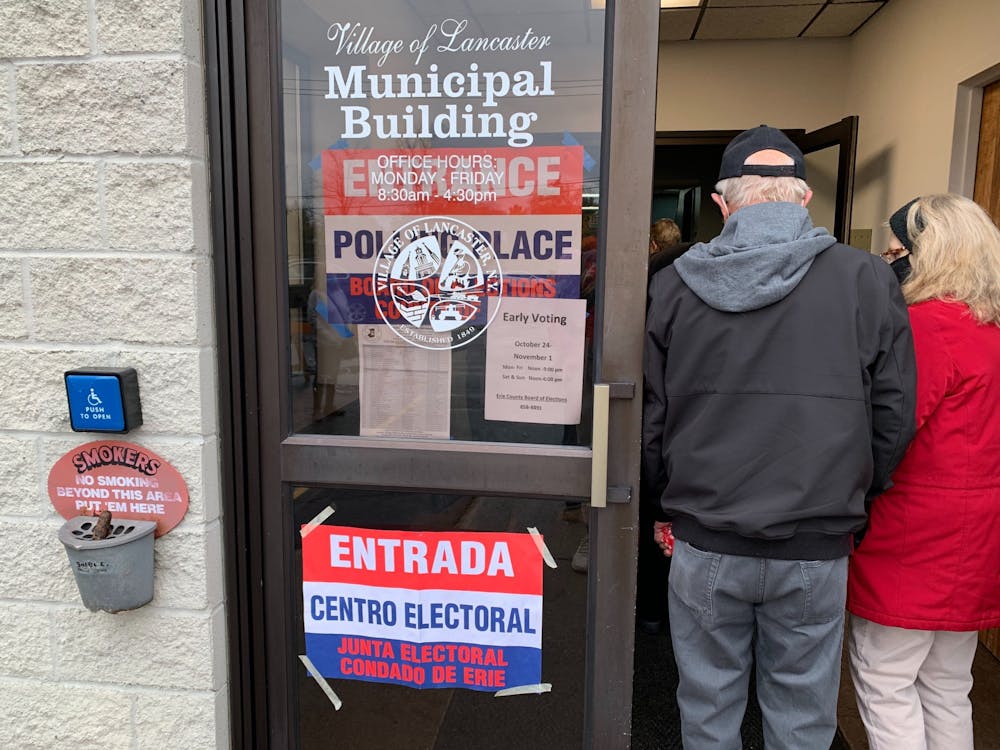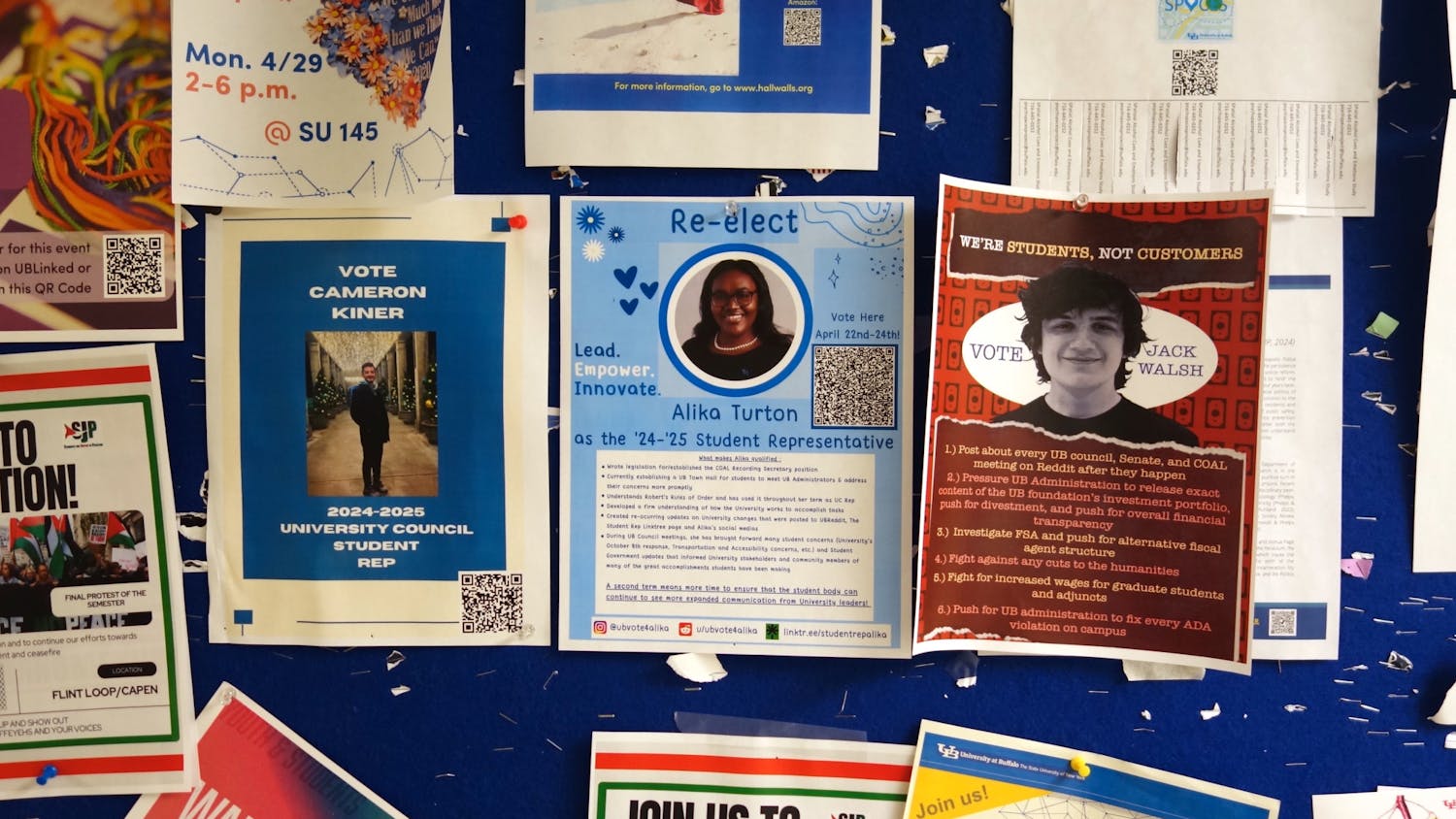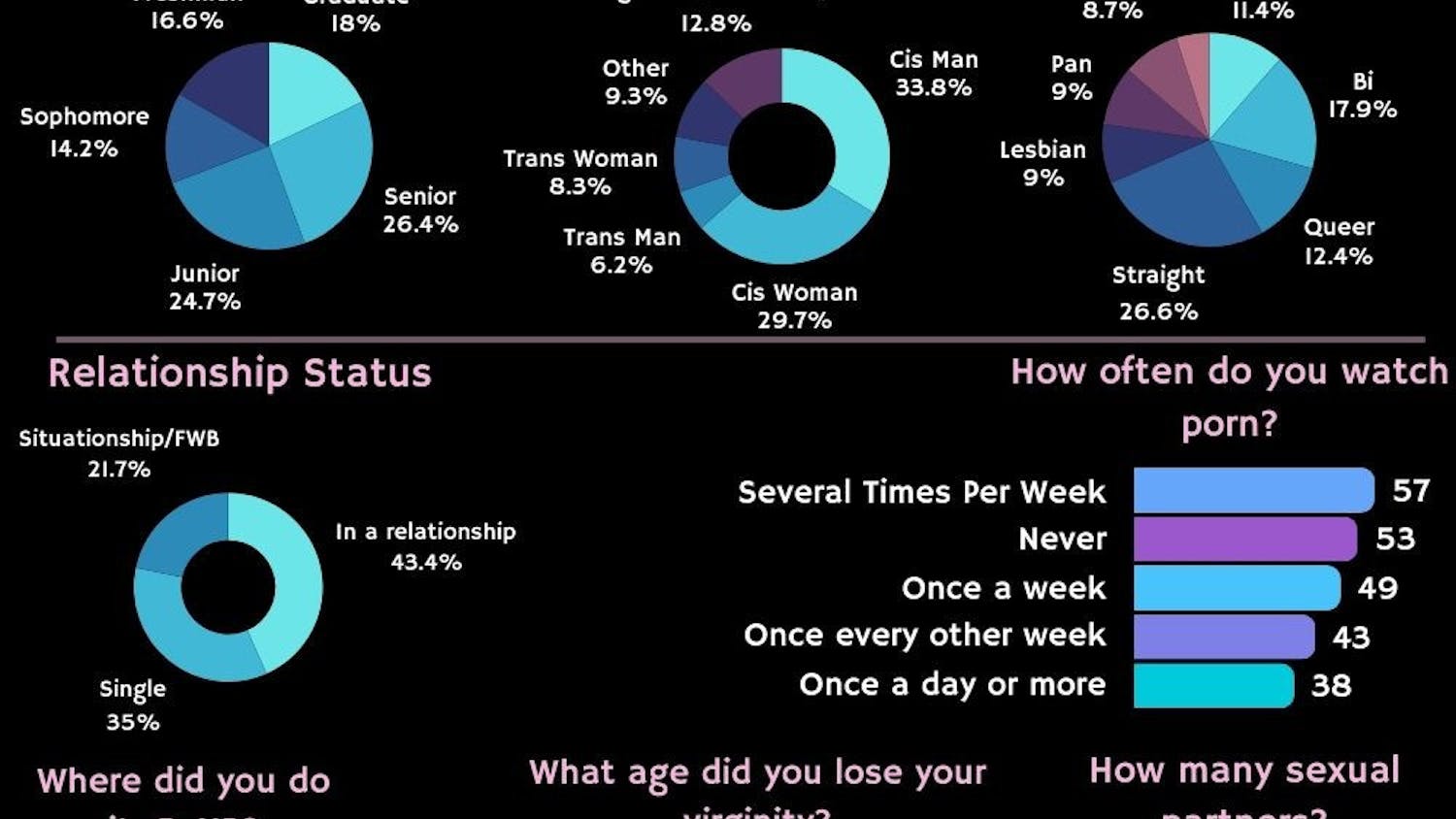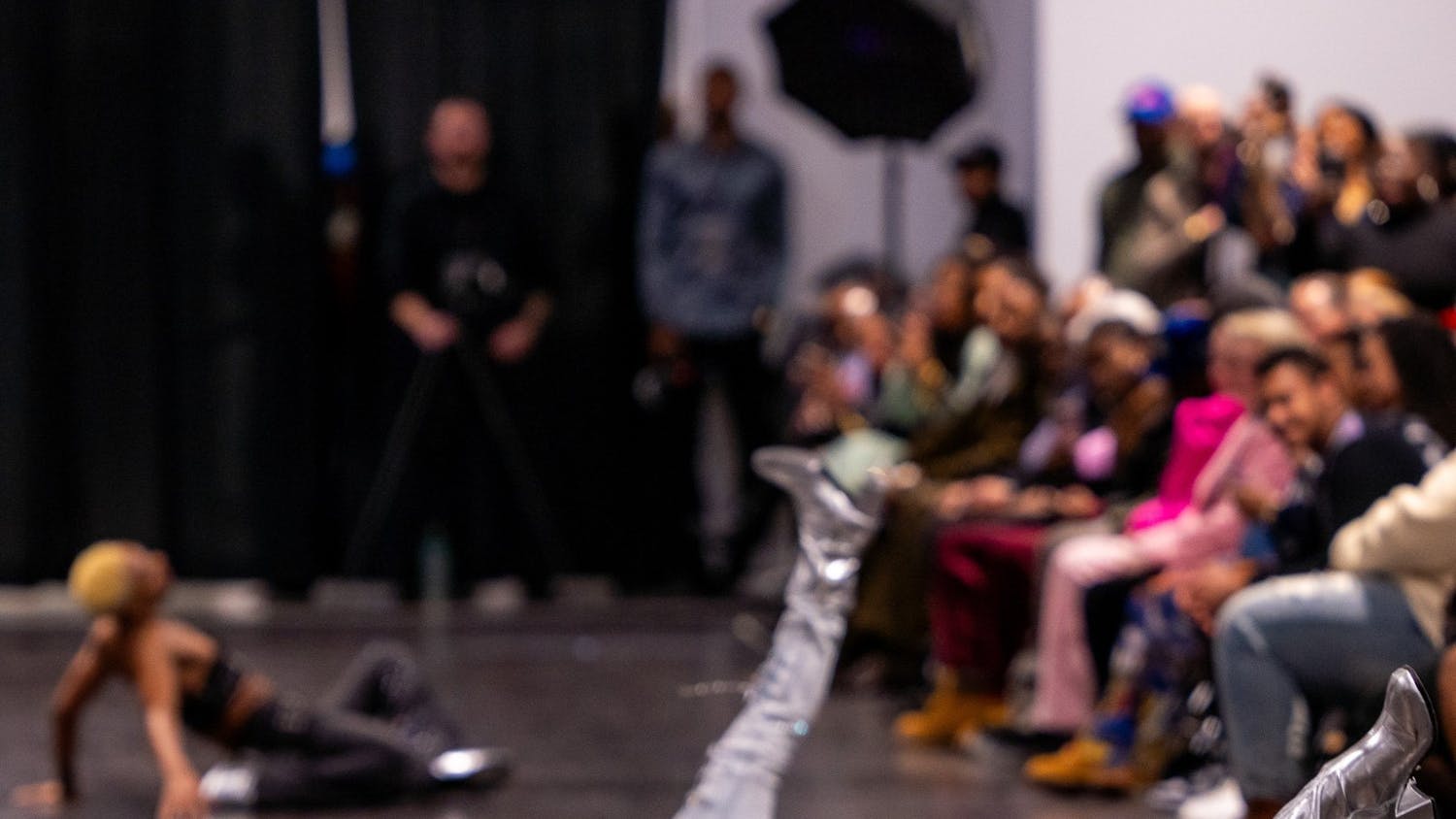UB College Democrats Vice President Savannah Chadwick Hochoy believes it’s “incredibly important” for young people to vote because of how “crucial” this election is.
“We must make our voices heard,” Hochoy said. “Politicians often underestimate the power of the youth, but if we turn out, we will show them that we are a force to be reckoned with.”
Student organizations like College Dems aren’t letting COVID get in the way of their campaigning. If anything, they are emboldened to educate students on the presidential candidates and hot topic issues like the Supreme Court and the importance of voting.
COVID isn't getting in the way of UB's get-out-the-vote efforts, either.
In an effort to increase student voter turnout, UB Student Engagement created UB Votes in 2016 to give students free transportation to voting polls on Election Day. UB Votes has also collaborated with the Residence Hall Association to create a five-episode “call to action” video series to encourage students to vote.
UB Votes will provide transportation to the polling site at Sweet Home High School for all North Campus residents on Election Day. The shuttle will pick up students from Governors, Ellicott Complex and the Student Union every 10 minutes. Parking and Transportation Services has posted the bus schedule on the UB Votes website.
Jacob Neiheisel, an associate professor of political science, said UB has done an effective job of encouraging and facilitating voting this cycle.
“I think that UB is doing what it can in terms of educating students about the election,” Neiheisel said. “I’d like to shy away from thinking about the university as incentivizing voting on behalf of students, since that term conjures up images of turnout-buying, but I think that various entities within the university are encouraging students to be civic-minded and engaged in politics.”
But some students and faculty feel UB’s call to action isn’t enough for young people to understand the power of voting.
UB Distinguished Professor of political science James E. Campbell said UB should be doing more to encourage civic engagement.
“We should be teaching more classes on American politics and hiring more faculty to teach them,” Campbell wrote in an email. “We should have more public events of American politics—speakers and symposiums—for the UB community, including students. At this point, there is virtually no recognition that the ideological orthodoxy here is a serious problem.”
One of the many ways UB College Democrats has engaged students is through infographics. The organization will post these visual images along with voter registration and phone banking links.
“We’ve been sharing with our members different ways to register to vote, different ways you can help out by phone banking,” Hochoy said. “There’s certain opportunities that we give to our members that they can do to help campaigns.”
Volunteers or interns can sign up to phone bank through College Dems’ mother organization, College Democrats of New York. Students are then given a call sheet from their field organizer, according to Hochoy. Students encourage voting and discuss candidates — from U.S. Senate candidate Jamie Harrison to Vice President Joe Biden — with potential voters.
Hochoy said the U.S. is so polarized that when she calls potential voters, their first question is whether the candidate is a Democrat or a Republican.
“I say, ‘they’re Democrat,’ and then they [say] either, ‘I’ll support him no matter what, I vote down the line Democrats,’ or they’ll say, ‘I’m Republican, please take me off your list,’ or [with] more hostile words,” Hochoy said. “Once you do phone banking you kind of get used to rejection and get used to hearing and talking to different people and seeing their views on many issues.”
Other clubs have taken to social media to educate student followers on recent events in the Supreme Court and the White House.
UB’s Pre-Law Chapter of the National Black Students Association collaborated with the Black Student Union on Oct. 28 to discuss voter suppression and inform students on the upcoming election. UBPLC also held a discussion about the presidential and vice presidential debates.
The Latin American Student Association hosted a Zoom discussion about the Deferred Action for Childhood Arrivals immigration policy, colorism within the Latinx community and being a Latina migrant stuck at the American border.
Even though the voting rate among U.S. college students has risen in recent years, it is still historically low. Many young people feel disengaged from politics, while others may find the process to be complicated or the electoral process to be overwhelming.
Despite this, young people are “the future of politics.” They are more ethnically diverse and liberal compared to older generations, and can swing the results of the upcoming election.
But if young people don’t understand the power of their vote, will discussions over Zoom and infographics on clubs’ social media pages be enough to incentivize them to vote?
UB spokesperson John DellaContrada said the pandemic has affected UB’s efforts to organize and coordinate on-campus voting and “inspire” students to get to the polls.
He compared the 2020 race to 2016, when nearly all of UB’s student population was in the Buffalo area. He said UB would not be serving as a polling place in 2020.
“In 2016, students could vote on campus,” DellaContrada said in an email. “UB offered to do that again this year. However, due to the pandemic and the reduced number of students on campus, the Board of Elections decided to not open a polling place on campus. This is why UB is collaborating with the BoE on the opportunity to vote at Sweet Home.”
Campbell believes the university hasn’t done a good job and said there needs to be more “informed” voting rather than “mass” voting.
“I don’t think the pandemic has had much, if anything, to do with this,” Campbell said. “The nation is highly polarized and our mediating institutions––the media and education––have made bad matters worse.”
Assistant Director for Community and Civic Engagement Rachel Di Domizio wrote in an email that UB Votes conducted a mock election on UBLinked from Oct. 26-28.
Student Engagement hosted a nonpartisan virtual presidential debate watch party with Neiheisel. The faculty and staff on the call answered student questions and provided context throughout the debate.
Other universities have taken the initiative to try and educate students on the power of voting in hopes of creating a larger young voter turnout.
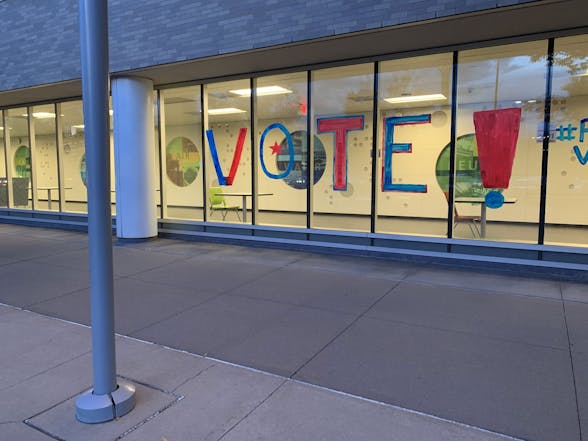
Students said racial inequality is the most important issue to them in 2020, followed by health care and climate change.
On Oct. 29, Binghamton University invited alumnus David Schultz, a professor of political science at Hamline University and professor of law at the University of Minnesota, to discuss the origins of the Electoral College and the effectiveness of its modern use over Zoom, according to the Binghamton University student newspaper, Pipe Dream. Binghamton has also offered an on-campus polling site for students since the 1970s which will move to its Events Center in November.
During election week, Syracuse University will be hosting the virtual event, “Who will Survive the Election? Unpacking the Impact of the 2020 U.S. Election,” offering its students the opportunity to take part in breakout sessions to discuss how issues within politics impact their personal lives. The day after the election, the university will host a one-hour interactive panel to discuss the election and answer students’ questions.
RHA President Matthew Taboni says RHA and UB Votes conducted a five-part speaker series with each episode covering a different topic. Topics included the political system and electoral college, gerrymandering and voter suppression in 2020, and a depiction of how the future president will affect the country.
Taboni said RHA is encouraging students to vote by leaving reminders around campus, including the word ‘vote’ painted in red and blue on the windows of Greiner Hall. RHA also ran other programs for students.
“Our next program was Steps to Civic Engagement,” Taboni said. “We created eight steps of ways students can be civically engaged, [like] political involvement, direct service, philanthropy, research and [educating others].”
These messages can be found in the staircase of every Ellicott residence hall, painted on the windows in the Student Union and Greiner Hall and placed in elevators. They can also be found on yard signs next to the foot path between Greiner Hall and the University Bookstore.
“Our goal was to put [them] everywhere so students would not miss it if they lived on campus,” Taboni said.
This year’s presidential election has the potential to break voter turnout records, including among young voters. Voter turnout among 18 to 29-year-olds in the 2018 midterm election (36%) increased 79% compared to the 2014 midterms (20%), according to the U.S. Census Bureau. The 79% increase is recorded as the largest percent increase of any age group.
“As student leaders we think it’s important for us to be civically engaged within our communities, locally and nationally, so that we can represent and then impact our next generation, after college as well,” Taboni said. “Starting now, we need to make sure we have the resources and education while we are in college so that when we leave college and when we leave these transformational years, we have that time and already an understanding to educate others as they come up after us and also have that knowledge as they move into the workforce.”
Nitya Cohen contributed reporting to this story.
Alexandra Moyen is the editor in chief and can be reached at alexandra.moyen@ubspectrum.com and on Twitter @AlexandraMoyen

Alexandra Moyen is the senior features editor of The Spectrum.

